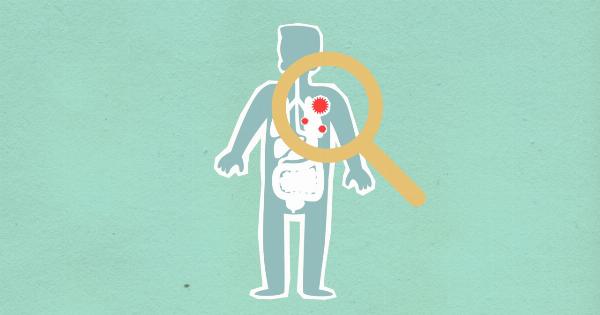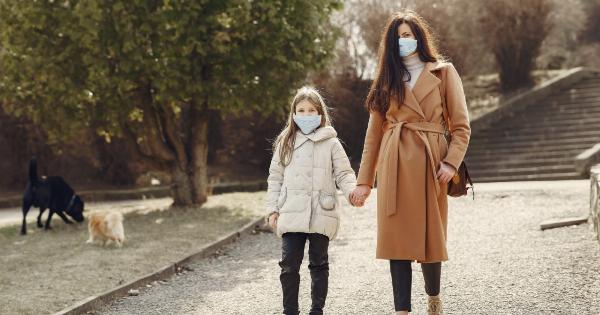Warts are small, rough growths on the skin caused by the human papillomavirus (HPV). They can appear on any part of the body, including the hands, feet, face, and genital area.
While warts are generally harmless, they can be contagious and easily spread from person to person or from one part of the body to another. Understanding the factors that contribute to the spread of warts is crucial for prevention and effective treatment. In this article, we will explore the main causes of warts spreading.
Direct skin-to-skin contact
One of the most common ways warts spread is through direct skin-to-skin contact.
This can occur when you shake hands with someone who has a wart, touch a surface that has come into contact with a wart, or engage in activities that involve close skin contact, such as sexual intercourse. HPV thrives in warm and moist environments, making it easier for the virus to spread when there is direct contact between infected and uninfected areas of the skin.
Sharing personal items
Warts can also spread through indirect contact with contaminated objects. Sharing personal items like towels, razors, nail clippers, or shoes with an infected individual increases the risk of transferring the virus.
The HPV virus can survive on surfaces for extended periods, making it important to avoid sharing such personal items if you suspect someone might have a wart.
Weakened immune system
A weakened immune system can make an individual more susceptible to the spread of warts.
People with weakened immune systems, such as those with HIV/AIDS, organ transplantation recipients, or individuals undergoing chemotherapy, have a higher risk of developing and spreading warts. When the immune system is compromised, it becomes less efficient at recognizing and fighting the HPV virus, allowing warts to multiply and spread more easily.
Scratching or picking at warts
While it may be tempting to scratch or pick at a wart, this behavior can actually contribute to the spread of warts. Scratching or picking at a wart can cause the virus to spread to adjacent healthy skin areas or to other parts of the body.
The virus can be present not only on the surface but also in the deeper layers of the skin. It’s crucial to avoid touching or manipulating warts to minimize the risk of spreading the infection.
Moist environments
HPV thrives in moist environments, so areas that tend to be warm and sweaty are more susceptible to the spread of warts. Public swimming pools, communal showers, and locker rooms are often hotspots for HPV transmission.
Walking barefoot in these areas can increase the risk of coming into contact with the virus. It’s advisable to wear sandals or flip-flops in such environments and to thoroughly dry your feet after exposure to minimize the chance of spreading or contracting warts.
Poor hand hygiene
Proper hand hygiene is essential in preventing the spread of warts.
Failing to wash your hands regularly, especially after touching or treating a wart, can increase the likelihood of spreading the virus to other parts of your body or to other individuals. It is important to wash your hands with soap and warm water for at least 20 seconds, paying attention to all surfaces of the hands, including in between the fingers and under the nails.
Sharing footwear
Sharing footwear, particularly in activities that involve close skin contact like sports or communal dressing rooms, can facilitate the spread of warts.
Warts can be present on the soles of the feet, known as plantar warts, and the virus can easily be transferred from one person to another through contaminated shoes or socks. It is advisable to avoid sharing footwear and to maintain good foot hygiene to minimize the risk of contracting or spreading warts.
Age and gender
Age and gender can also influence the spread of warts.
Children and young adults, particularly those between the ages of 12 and 16, are more susceptible to warts due to a less-developed immune system and increased physical contact with others in school or social settings. Additionally, some studies have suggested that males have a higher risk of developing and spreading warts, particularly genital warts, compared to females.
However, proper preventive measures and education can help reduce the spread of warts in any age group or gender.
Inadequate treatment
If warts are left untreated or improperly treated, they can easily spread. Cutting or shaving a wart without proper medical guidance can cause the virus to spread to nearby areas.
Over-the-counter remedies may not always be effective, and using them without proper knowledge or care can lead to the spread of warts. Seeking professional medical advice and appropriate treatment can help prevent the spread of warts and ensure effective management.
Environmental factors
Environmental factors, such as humid climates or occupational exposure, can contribute to the spread of warts.
Certain occupations that involve prolonged contact with water or chemicals, like dishwashers or cleaners, may increase the risk of developing and spreading warts. it is important to take necessary precautions, such as wearing protective gloves and maintaining good personal hygiene, to reduce the likelihood of HPV transmission.
Conclusion
Understanding the causes of warts spreading is crucial for prevention and management.
Warts can spread through direct skin-to-skin contact, sharing personal items, a weakened immune system, scratching or picking at warts, moist environments, poor hand hygiene, sharing footwear, age and gender, inadequate treatment, and environmental factors. By practicing good hygiene, avoiding direct contact with warts, and seeking appropriate medical treatment, the spread of warts can be minimized.
Education and awareness about the transmission of warts are essential for preventing the spread and ensuring prompt treatment when needed.





























